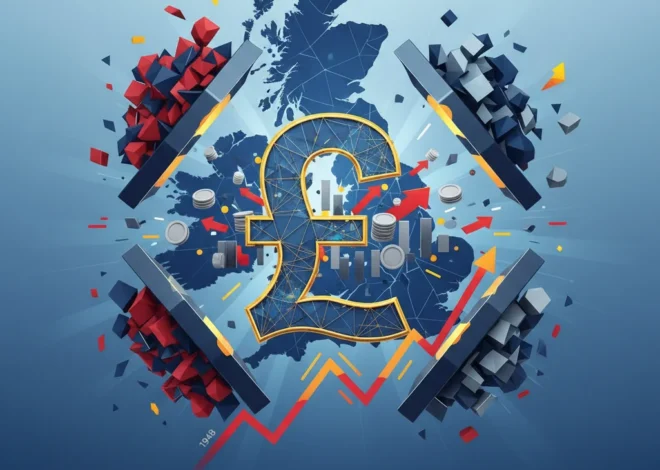The Great Unraveling: Is Japan’s Trillion-Dollar Debt Bubble About to Burst?
For decades, Japan has been the great paradox of modern economics. A nation saddled with a national debt soaring past 260% of its GDP—a figure that would trigger panic in any other developed nation—has somehow cruised along with remarkable stability. Economists, investors, and policymakers looked on, half in awe and half in disbelief, as Japan defied the gravitational laws of finance. The country became a case study in how to manage staggering levels of sovereign debt, seemingly without consequence. But the music is about to stop.
The unique set of circumstances that insulated the world’s third-largest economy from a catastrophic debt crisis is rapidly disintegrating. The pillars that upheld this fragile equilibrium for a generation are crumbling, and Japan is now confronting the hard truth that its fiscal flexibility has been maxed out. For anyone involved in global finance, from Main Street investors to institutional traders, understanding this shift is critical. The era of Japan’s “dangerous debt delusion,” as some analysts have termed it, is coming to an end, and the fallout could reshape the global economic landscape.
The Three Pillars of Japan’s Economic Fortress
To understand why Japan is now on a knife’s edge, we must first appreciate the three unique pillars that allowed it to sustain a mountain of debt for so long. These weren’t just economic policies; they were deep-seated structural features of the Japanese economy that created a perfect, self-contained system for absorbing government debt.
- A Nation of Savers: Historically, Japan’s greatest strength was its massive pool of domestic savings. Japanese households and corporations were prodigious savers, and this vast reservoir of capital needed a home. The Japanese government was more than happy to oblige, issuing Japanese Government Bonds (JGBs) that were eagerly snapped up by domestic banks, pension funds, and individuals. This meant Japan never had to rely on fickle foreign investors to fund its deficit. It was a closed loop, insulating the country from external market pressures.
- The “Good” Deflation: For most of the past two decades, Japan has been battling deflation—a persistent fall in prices. While often seen as an economic disease, deflation had a peculiar side effect that helped the government. With prices falling, a zero percent interest rate on a JGB actually translated to a positive real return for investors. This allowed the Bank of Japan (BoJ) to keep borrowing costs at virtually zero, making the government’s interest payments on its colossal debt surprisingly manageable.
- A Fortress-Like Current Account Surplus: Japan consistently exported more than it imported, running a large current account surplus. This meant a steady flow of foreign currency into the country, reinforcing its status as the world’s largest creditor nation. This surplus acted as a buffer, proving that Japan earned more than enough from the rest of the world to be self-sufficient, further reducing its need for foreign capital.
This unique trifecta created a stable, predictable environment for the Japanese economy and its financial markets. However, the ground beneath these pillars has shifted dramatically. What was once solid is now turning to sand.
The Paradigm Shift: When the Pillars Crumble
The story of Japan’s current predicament is one of slow-moving, tectonic shifts that have suddenly reached a critical point. The very foundations of its economic stability are no longer secure.
The table below illustrates the stark contrast between the old reality that supported Japan’s debt and the new, more precarious situation it faces today.
| Economic Pillar | The Old Reality (Pre-2020s) | The New Reality (Present Day) |
|---|---|---|
| Domestic Savings | Extremely high household and corporate savings rates created a captive market for JGBs. | Household savings have plummeted, nearing zero. Corporations are now investing, not just saving. |
| Inflation/Deflation | Persistent deflation meant zero nominal interest rates still offered a positive real return. | Inflation has returned, forcing the Bank of Japan to consider raising interest rates, which would explode debt servicing costs. |
| Current Account | A massive surplus, making Japan the world’s largest creditor and independent of foreign capital. | The surplus has shrunk dramatically, and at times turned into a deficit, increasing reliance on foreign funding. |
Let’s break down why this is so alarming. The once-mighty household savings rate, which stood at 10% of disposable income as recently as the early 2000s, has now collapsed to near zero (source). An aging population is drawing down its savings for retirement. Simultaneously, the corporate sector, which for years hoarded cash, has finally started to invest it, further shrinking the pool of domestic capital available to absorb government debt. This means that for the first time, Japan may need to look abroad to find buyers for its bonds—buyers who will demand much higher interest rates.
Compounding this is the return of inflation. After decades of trying to spark inflation, Japan finally has it. But this “success” is a double-edged sword. To keep inflation in check and normalize its monetary policy, the Bank of Japan must inevitably raise interest rates from their ultra-low levels. This is where the math becomes terrifying.
The Price of a Masterpiece: Unpacking the Economics of Basic Income for Artists
The Doomsday Math: Why a 1% Rate Hike is an Existential Threat
The Japanese government’s outstanding debt is a mind-boggling figure, exceeding ¥1.2 quadrillion (approximately $8 trillion). When your central bank keeps interest rates at zero, the cost of servicing this debt is suppressed. But what happens when that changes?
A mere 1% increase in the average interest rate on this debt would add over ¥12 trillion ($80 billion) to the government’s annual budget deficit. A 2% hike would double that. These aren’t small numbers; they represent a significant portion of Japan’s total tax revenue. According to the original analysis, a 2% interest rate would eventually consume 17% of the entire government budget in interest payments alone, crowding out essential spending on healthcare, infrastructure, and defense.
This creates a potential “doom loop.” To attract buyers for new bonds, the government might have to offer higher interest rates. But higher rates increase the deficit, forcing the government to issue even more debt, which in turn requires even higher rates to attract buyers. It’s a vicious cycle that can quickly spiral out of control.
We don’t have to look far for a recent example of how quickly markets can turn on a government perceived as fiscally irresponsible. In 2022, the UK government under Liz Truss announced a “mini-budget” of unfunded tax cuts. The bond market’s reaction was swift and brutal. Yields on UK government bonds soared, the pound plummeted, and the Bank of England had to intervene to prevent a full-blown financial crisis. Japan’s fiscal situation is far more precarious than the UK’s was. Its debt-to-GDP ratio is more than double (source), meaning a loss of market confidence could be even more devastating.
Geopolitical Chess at COP30: How Brazil's Climate Diplomacy is Reshaping Global Finance
The Only Way Out: A Painful but Necessary Reckoning
The path forward for Japan is narrow and politically treacherous. The delusion that debt doesn’t matter has run its course. The country must now engage in serious fiscal consolidation—a technical term for the painful process of raising taxes and cutting spending. The goal is to shrink the primary deficit (the deficit before interest payments) and signal to the markets that the government is serious about getting its fiscal house in order.
This is, of course, easier said than done. Raising the consumption tax is deeply unpopular. Slashing social security spending for an aging population is a political non-starter. Yet, the alternative is far worse: waiting for a market-induced crisis to force the government’s hand. An adjustment dictated by a bond market panic would be far more severe and chaotic, likely plunging the country into a deep recession and triggering a sovereign debt crisis.
The challenge for Japanese leaders is to act preemptively, to restore fiscal flexibility before it’s gone for good. This requires political courage and a willingness to communicate the hard truths to the public. It means moving away from the legacy of “Abenomics,” which relied heavily on fiscal stimulus and monetary easing, and toward a more sustainable model of economic management. Innovations in financial technology and fintech might help improve government efficiency, but they can’t solve a fundamental imbalance of this magnitude.
Europe's Trillion-Euro Question: Can a United Financial Front Win the Global Tech Race?
Conclusion: A Wake-Up Call for the World
Japan’s long, quiet slumber, insulated from the economic realities that govern other nations, is over. The slow erosion of its foundational pillars has exposed a vulnerability that can no longer be ignored. The country stands at a crossroads: it can either choose the difficult path of proactive fiscal reform or wait for a catastrophic market event to choose for it.
For global investors, business leaders, and anyone with a stake in the international stock market or financial system, Japan’s journey is more than a distant news story. It is a crucial test case for the limits of sovereign debt in a major economy. The outcome will have profound implications for global capital flows, interest rates, and the very definition of a “safe asset.” Japan’s debt delusion has been a dangerous game of chicken with economic reality, and it appears the country is finally running out of road.


